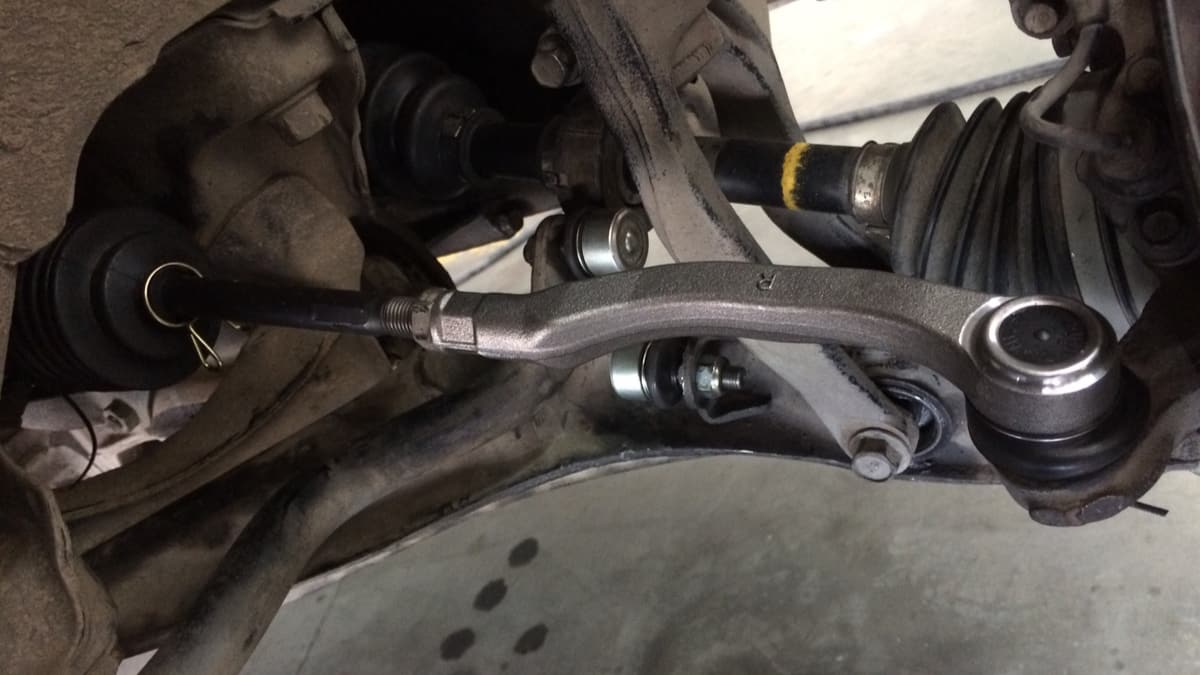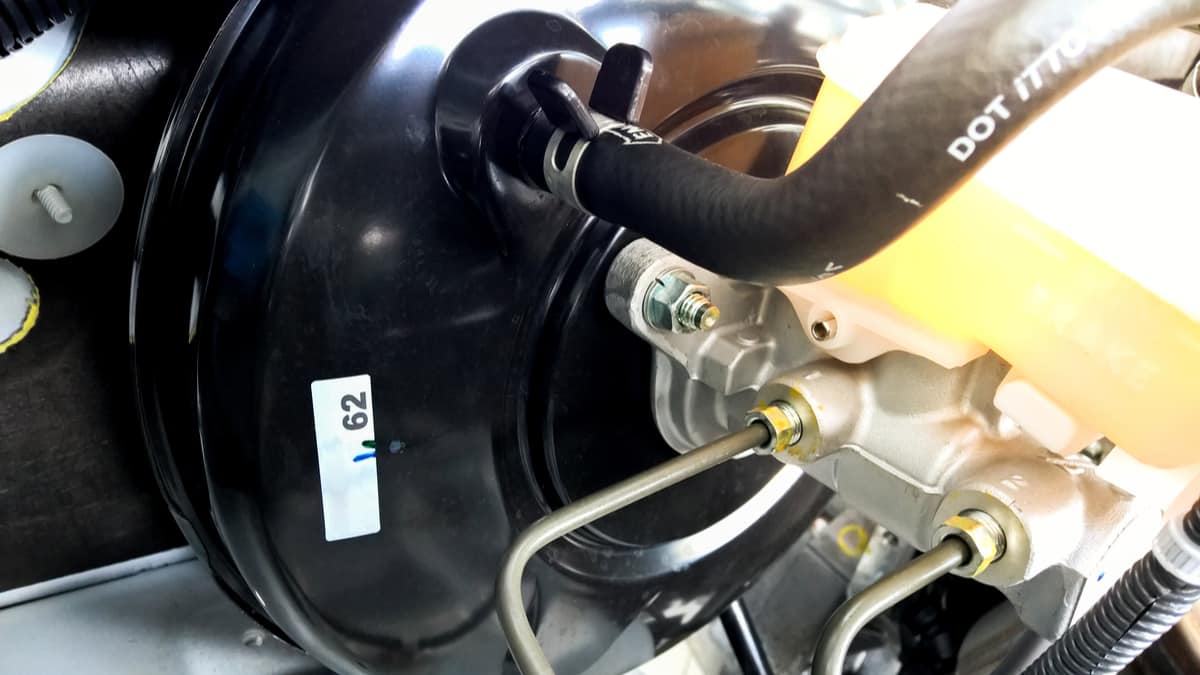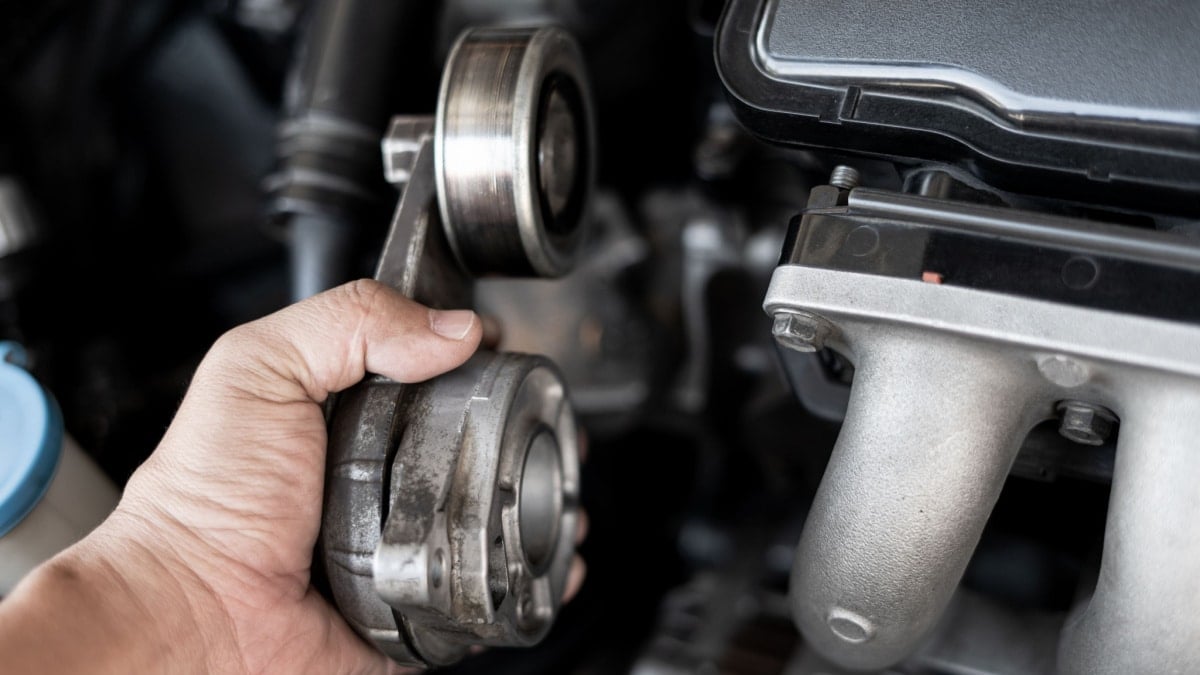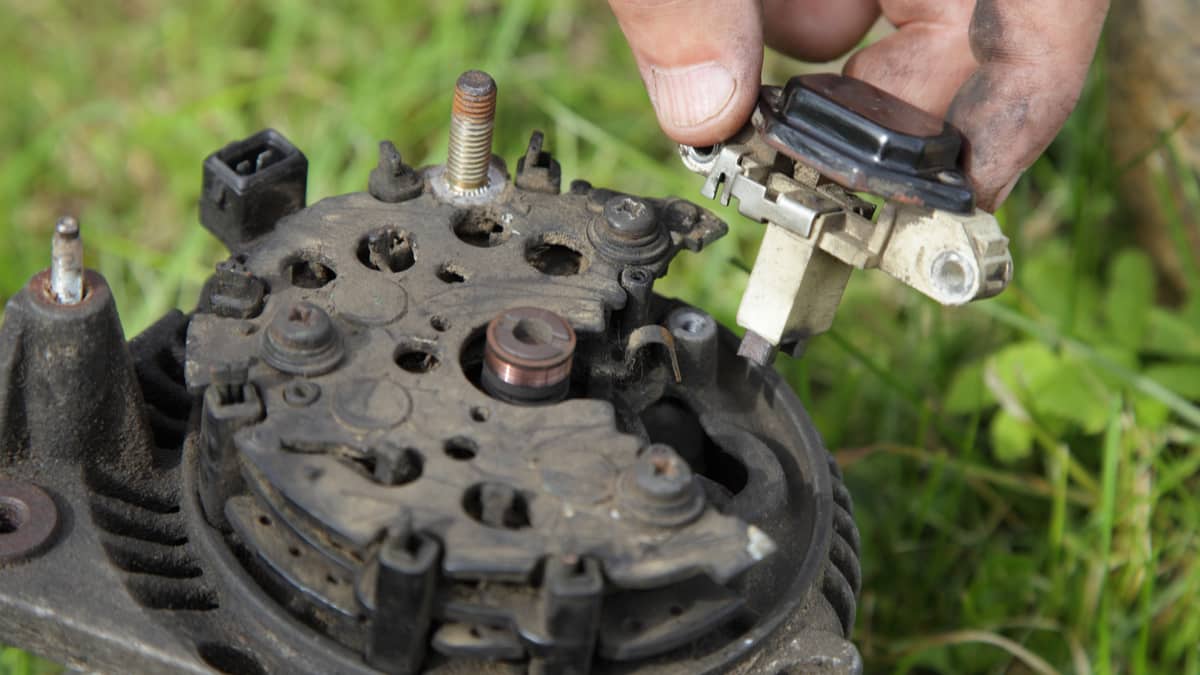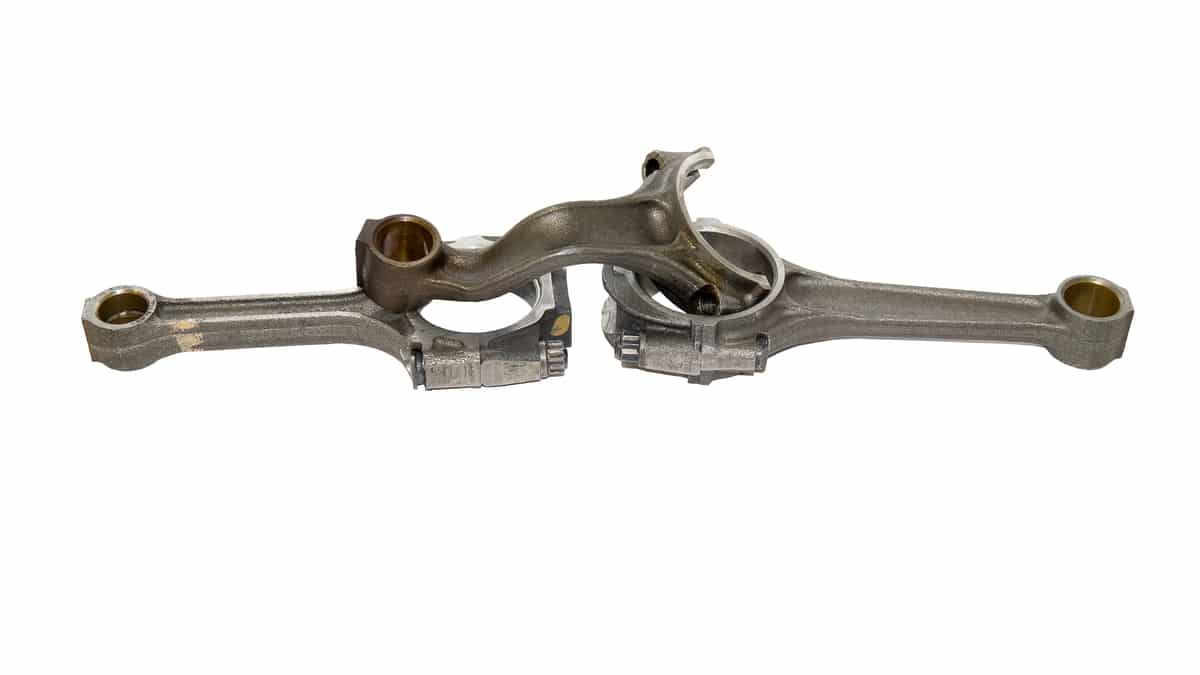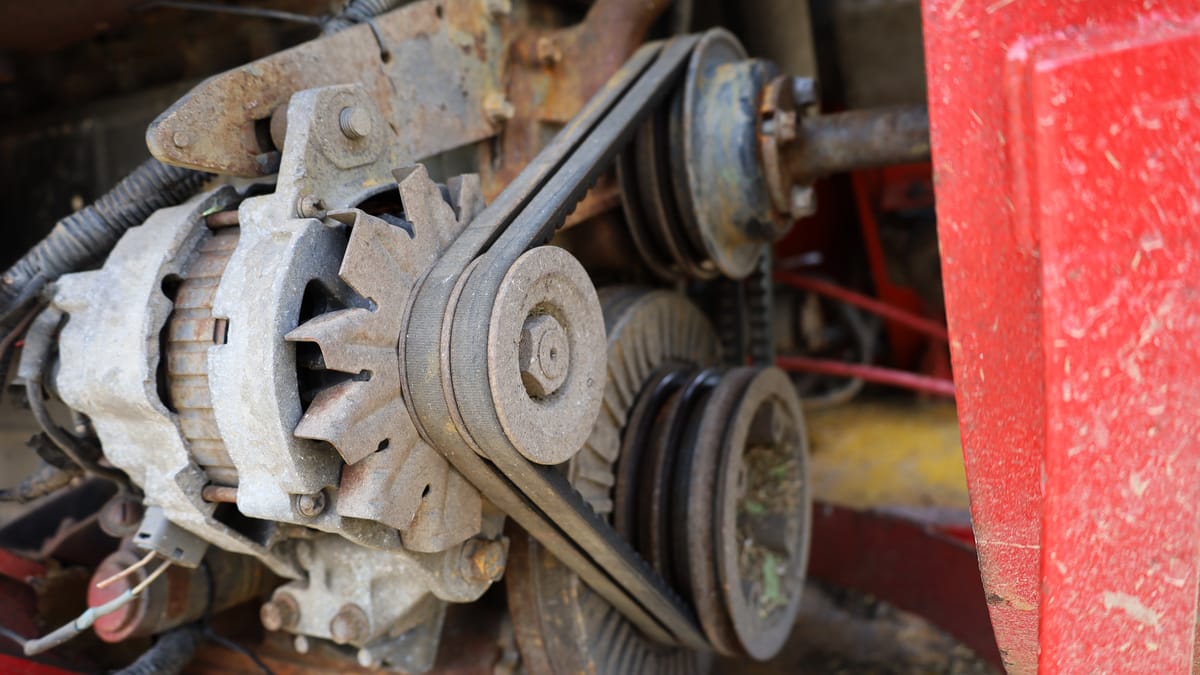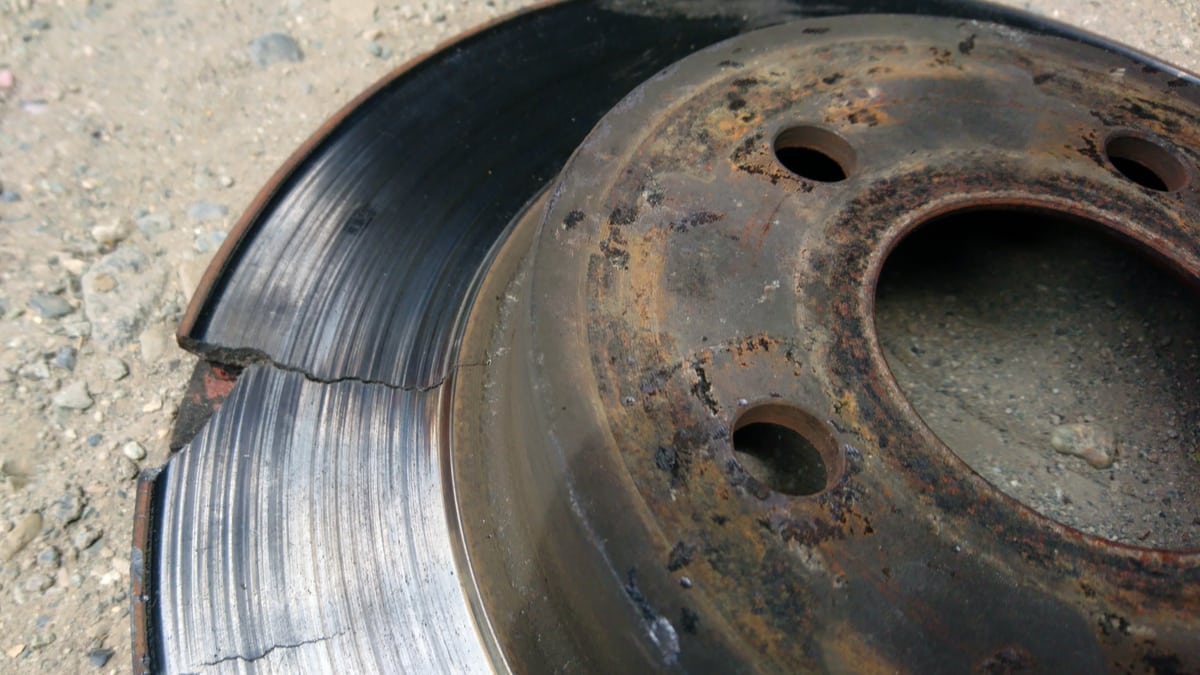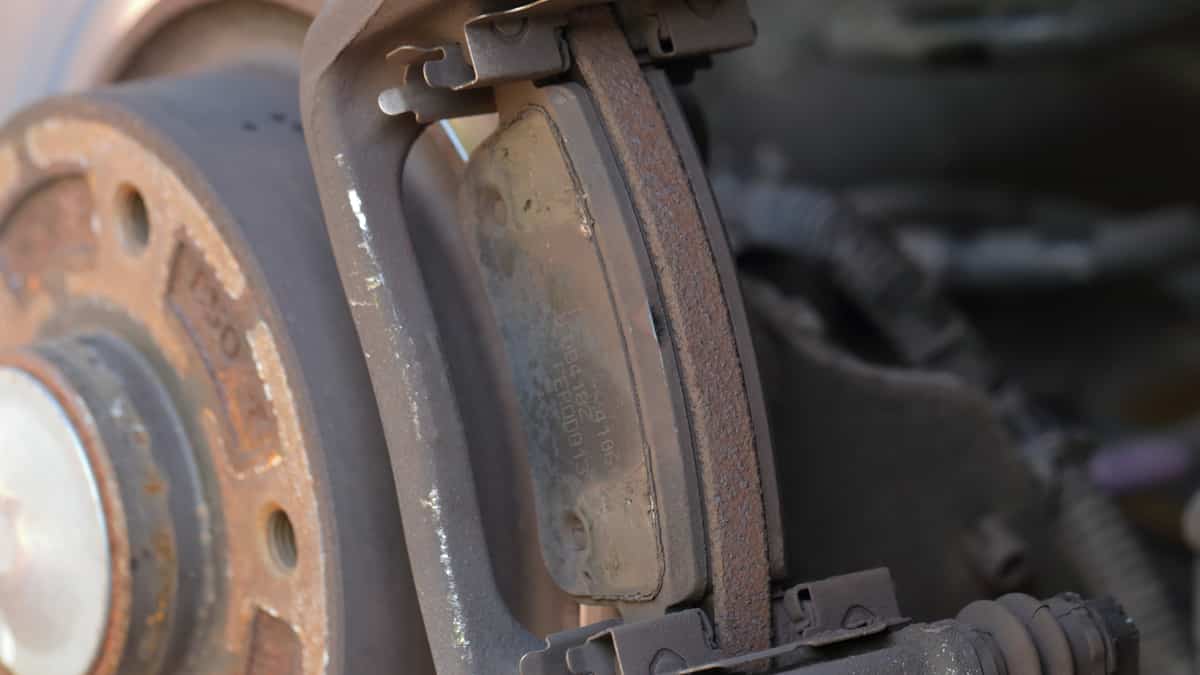The tie rod is part of your car’s steering system. Because of the duty the tie rod performs and where it’s located, it’s subject to a lot of abuse. That’s why it’s important to know the bad tie rod symptoms, so you can replace it when needed.
This guide covers the top symptoms of a bad tie rod. We also explain what it is and show you how the tie rod is different from the tie rod end. A section also discusses the inner and outer tie rods so you understand the differences. After showing you where it’s located and breaking down the replacement cost, we explain how to test a tie rod and answer some of your questions.
Symptoms Of A Bad Tie Rod
When a tie rod goes bad, you’ll notice uneven tire wear and a lack of steering responsiveness. It can also lead to bad wheel alignment, which can cause the vehicle to pull to one side. Bad tie roads create vibration and you may hear strange noises, especially while steering.
Let’s examine these possible symptoms in depth.
1. Uneven Tire Wear
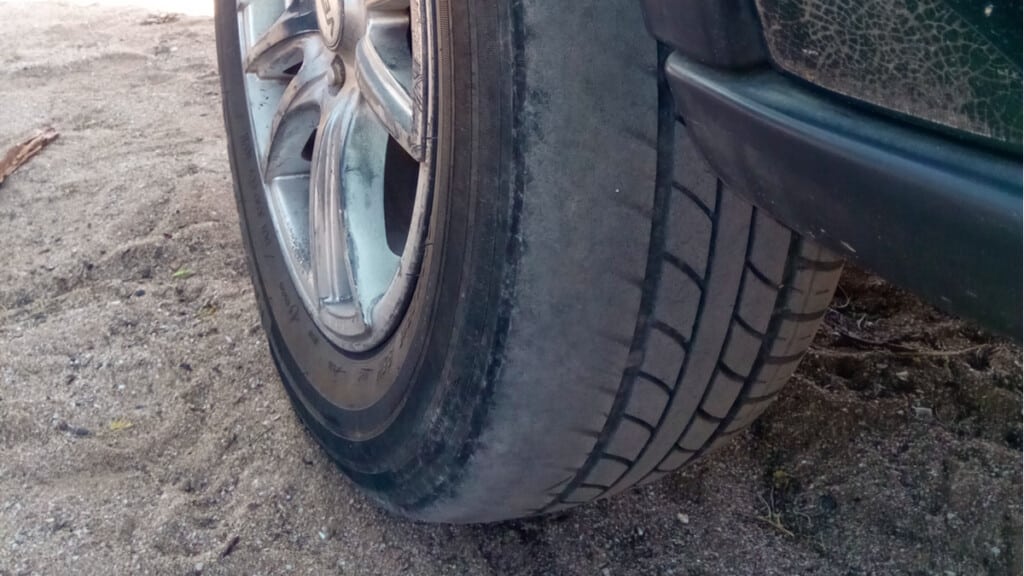
When the tie rods are in good shape, the tread on the tire should wear evenly, considering that the alignment is also correct. If you notice uneven tie wear, the problem could be a defective tie rod.
Usually, the wear will be heavy on one side and not the other. This type of wear is caused by the toe being out of alignment, which we discuss more in a few minutes. However, tire wear can be caused by multiple steering or suspension issues, so a complete diagnosis is needed.
2. Steering Responsiveness
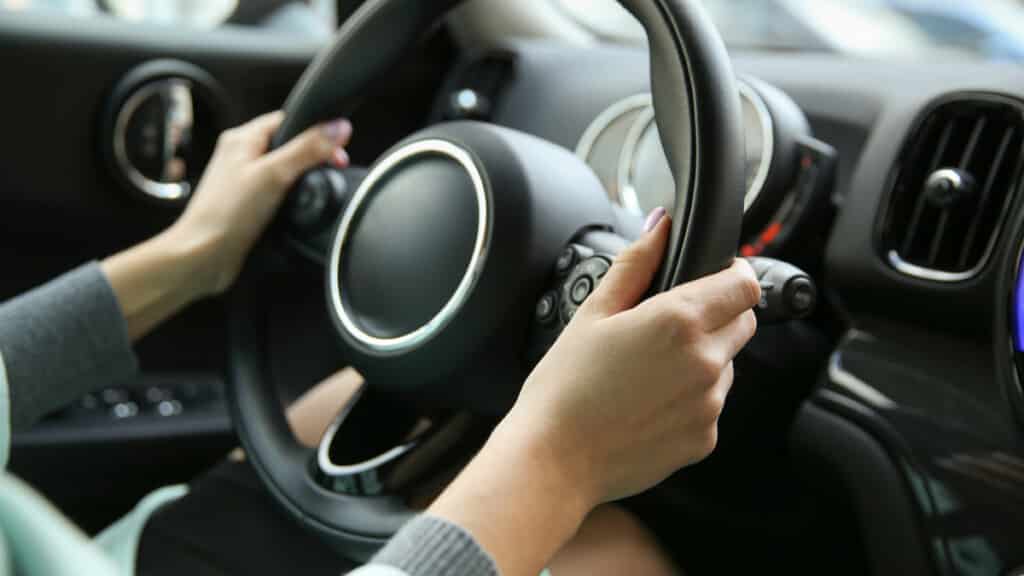
When the steering wheel feels unresponsive, it’s called having excessive play. What this condition refers to is having a dead zone while turning the wheel, meaning you have to turn it further before the wheels move. The more play a wheel has, the more likely you are to lose control while driving.
A tie rod can lead to this play in the wheel, but so can several other issues, especially with the suspension and steering. Perform a visual inspection or have a trusted mechanic take a look at it to be sure.
3. Bad Wheel Alignment
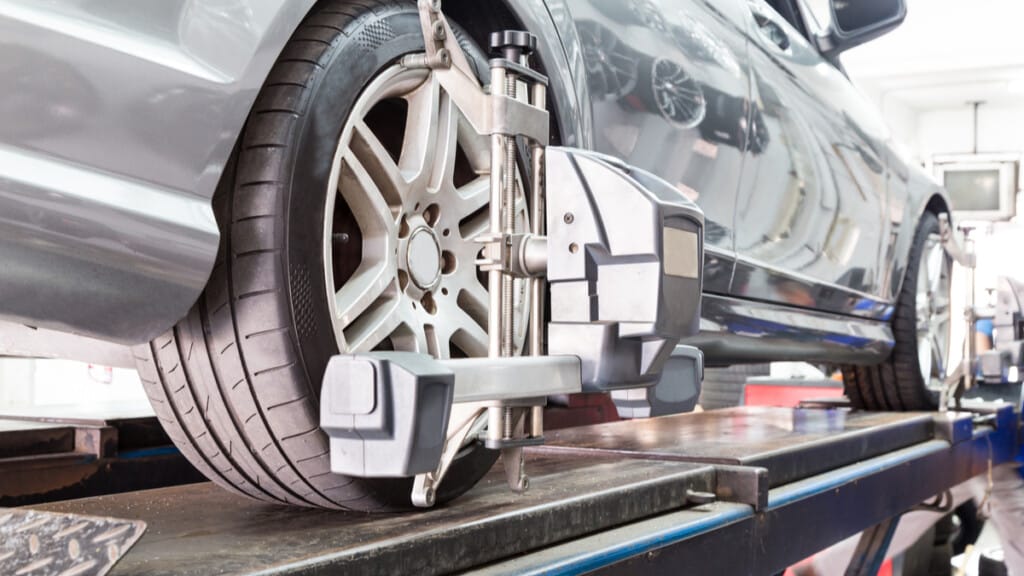
Wheel alignment refers to how the wheels are angled and their relation to the road. Most experts agree that alignment should be performed every couple of years unless it’s needed sooner.
When a tie rod wears, it becomes loose and the front end can become misaligned. Along with replacing the tie rod, you would also want to perform the alignment to ensure the tires wear evenly.
4. Car Pulls To One Side
When the wheel alignment is off, the car may start to pull in one direction or the other. This isn’t always the case, depending on if both tie rods are bad or just one.
This symptom also plays in with some of the others. For example, as the car pulls to one side because of the bad alignment, you’ll also start to see unusual wear on the tires. Additionally, you may feel shaking, which is our next symptom.
5. Vibrations
The tie rods link the front wheels to the steering wheel. Therefore, if there’s a problem with the tie rod, you’ll notice shaking or vibrations with the steering wheel. It may become worse as you turn or step on the gas. Once you notice steering problems, it’s time to have the car fixed before you lose control.
Again, the vibration alone can’t determine if the tie rods are bad. Instead, you need to evaluate this symptom in conjunction with the others that are happening.
6. Abnormal Noises When Steering
In addition to the other problems stated, you may hear strange noises while the wheel is vibrating. Usually, a bad tie rod creates clunking or knocking sounds.
These sounds come from the ratting of the links and joints from the loose tie rod. If the boot that protects the tie rod joint also gets damaged or contaminated with debris, you may hear a grinding noise while steering.
What Is A Tie Rod?
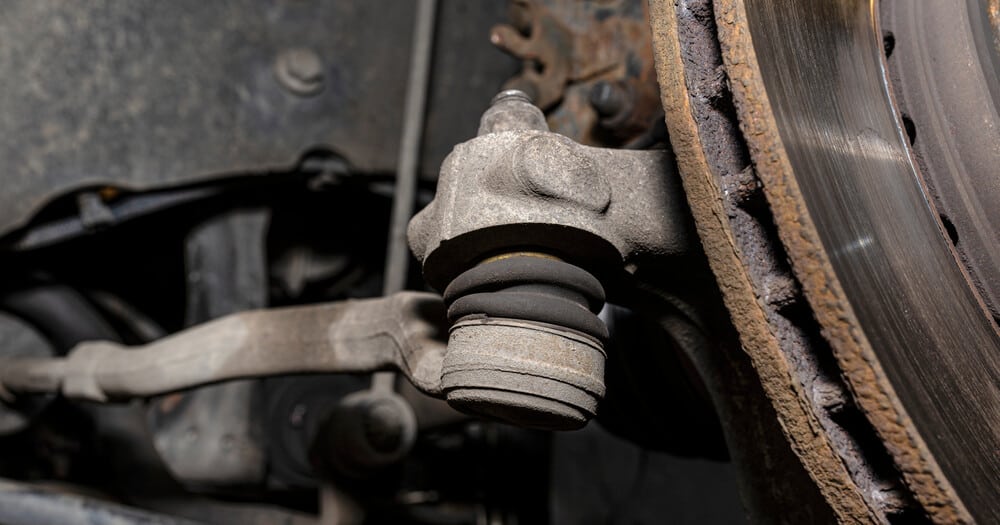
The tie rod is part of the steering system of your car. It’s meant to distribute the force to the front tires on a vehicle, helping to create inward or outward rotation.
The tie rods are also needed to maintain the front-end alignment. The toe measurement, the inward and outward orientation of the front tires, is determined by the tie rods. When everything is aligned and working correctly, the tires wear normally and you shouldn’t hear strange noises or feel weird vibrations from the steering wheel.
Tie Rod vs. Tie Rod End
Many people relate the tie rods and tie rod ends as the same parts, but they are different. These two terms cannot be used interchangeably.
The tie rod end is the part of the assembly that includes the ball joint attached to the steering knuckle. It threads to the inner tie rod at the other end.
The other side of the assembly is the inner tie rod. This part has male threads on the outward end where the outer tie rod gets attached. At the other end, the inner tie rod threads into the steering rack.
Where Are The Tie Rods Located?
The tie rods are found on the front of your vehicle, connected to the steering knuckle on one end. The other end of the tie rod connects with the steering system. It doesn’t matter if your car uses a rack and pinion steering system or a steering gearbox, both contain inner and outer tie rods.
As you turn the steering wheel, the steering shaft connecting the wheel to the assembly also turns in relation to the movement. This shaft is connected to the steering gear, which attaches to the tie rods. Depending on whether you turn left or right, the steering system pushes the tie rods and steering arms in the appropriate direction.
Inner vs. Outer Tie Rods

The inner tie rod has an inline ball joint connecting it to the steering rack or gearbox. In comparison, the outer tie rod is a right-angled ball joint that’s connected to the steering knuckle.
You can find the inner tie rod closer to the center of the vehicle, which is why it has the name “inner.” This part is the first pivot point, causing the wheels to turn. Some inner tie rods are hidden under an accordion-type boot that keeps dirt and debris from getting inside. If the boot fails, the inner tie rod can become damaged.
The outer tie rod end contains a rubber boot that keeps dust, dirt and water from entering the ball joint. This tie rod is more susceptible to wear simply because of where it’s located.
How Much Does It Cost To Replace A Tie Rod?
A typical tie rod replacement can cost $150 to $550 for parts and labor. The labor is going to make up the majority of the cost, with most cars needing two to three hours for replacement. The parts alone should only cost between $25 and $150, allowing you to save some money if you can do the repair yourself.
Tie rod replacement should always occur in pairs. Significant wear to one side can reveal the condition of the other as well.
Additionally, a wheel alignment should be performed after tie rod replacement. A front-wheel alignment may cost $50 to $100 on top of the other repair costs.
How Do You Test A Bad Tie Rod?
Determining if you have a bad tie rod isn’t a difficult task. You can perform the same kind of check that a mechanic would.
Here are some steps to follow.
- Lift the vehicle.
- With both hands, rock each wheel back and forth.
When the tie rods are good, you shouldn’t be able to move the wheels other than to rotate them around. However, the tie rod could be the issue when the wheel shifts back and forth. Furthermore, you may hear some clunking as the wheel shifts.
Taking off the front wheels is the best way to determine what’s wrong. A visual inspection reveals wear and damage.
Can you drive with a broken tie rod?
You may be able to continue driving the car with a worn-out tie rod. However, once the tie rod fails completely, steering will be lost and you’ll have to get your vehicle towed. For that reason, it’s best to replace the tie rod before complete failure occurs.
Can I replace the tie rods myself?
If you have mechanical experience and some standard tools, you can replace the tie rods at home. After you remove the wheels, you have access to the tie rods. If you aren’t sure how to replace them, it’s best to take your vehicle to a trusted repair shop instead. However, you need to do a wheel alignment afterward, which you need special tools to do.
What happens if you don’t fix a broken tie rod?
The worst-case scenario is that the tie rod will break away from the steering knuckle, causing you to lose control of the car. You could get into an accident and cause injury to yourself or others. That’s why you should always replace a bad tie rod when it’s first diagnosed.
Do I need a wheel alignment after replacing the tie rods?
Whenever steering or suspension parts are replaced, it’s advisable to get an alignment performed. In this case, you only need a front-end alignment, which may cost $50 to $100. If you don’t have the wheels aligned, you could allow for uneven wear to the tires, creating premature failure.
Do you need to replace both tie rods?
You should always replace tie rods in pairs, just as you would with brakes. When one tie rod is worn and damaged, it’s a reflection of the other side. Instead of needing to replace the other side later, you may as well just do the work at the same time.
The tie rods aren’t a part of the car that many average drivers are familiar with until there’s a problem. Yet, once the shaking and vibrations start, it becomes something that must be paid attention to. Driving with bad tie rods is never a good idea, considering we are talking about the steering of your car. If they were to fail, you could lose steering ability, rendering your car a dangerous weapon.
However, if you are paying attention to the symptoms of a bad tie rod and you use the same inspection we would as professional mechanics, you can replace the defective part before trouble occurs. It may not always be convenient to fix a tie rod, but it’s what you must do to remain safe.
Categories: Suspension
